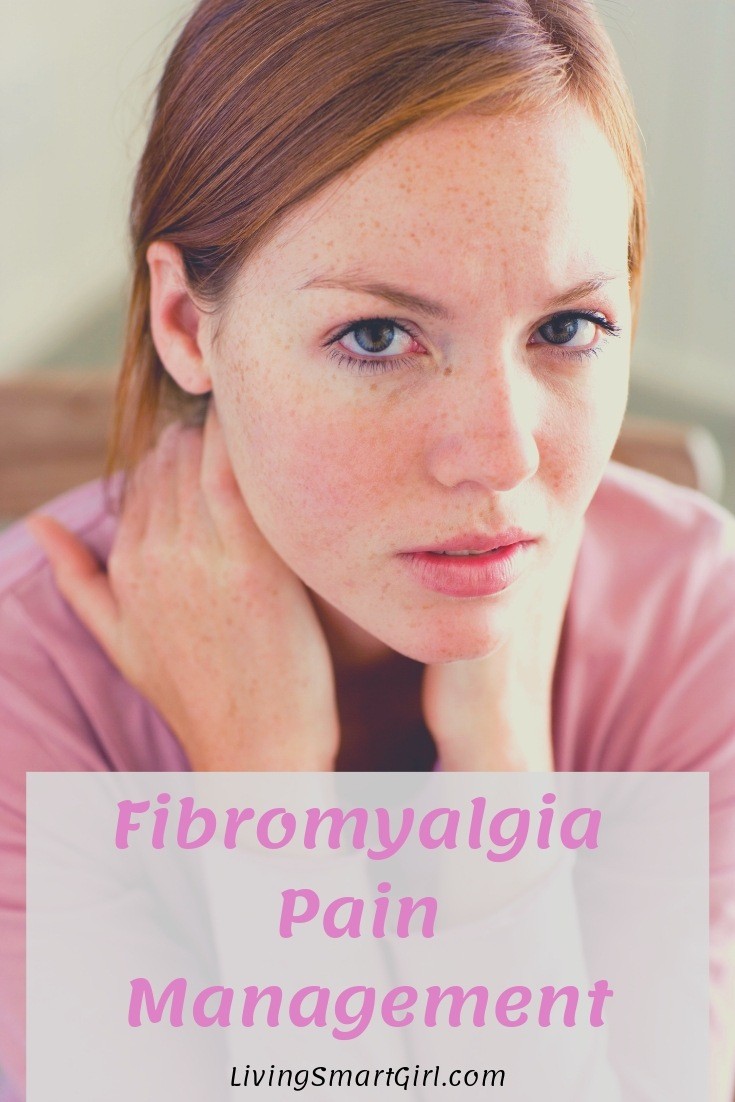Fibromyalgia
Disclosure ~ this post contains affiliate links.
Living with Fibromyalgia makes for a very interesting life, to say the least. The daily pain can go from one extreme to the next, just in the blink of an eye. I will never understand how one day I can feel almost human, and then for a full week just hurt so bad I don’t want to get out of bed. It really is one of those conditions that makes a person start to second guess if they are losing their mind.
Fibromyalgia symptoms include painful tender points, deep muscle pain, back pain, neck pain, headaches, gut issues, fatigue, and so much more. There are so many things that go along with the condition and it seems Dr’s don’t even know all that is wrapped into this condition.
If you are a Fibromyalgia sufferer or are close to someone who is, there is one thing that is for certain. Fibromyalgia is a pain to live with, literally!
Fibromyalgia Pain
Fibromyalgia pain is a feeling in your body that warns you something is wrong. Many people might experience pain in their body and that pain one feels is how the body alerts the brain that there is something wrong. But, after a person lives with pain for days, weeks, or months, it just seems to become a way of life. This in turn, becomes the disease as pain is Fibro and Fibro is pain.
Fibromyalgia-related pain is pain that causes you to ache all over for no apparent reason. You have painful “trigger points,” places on your body that hurt for no reason and no matter what medication you take. Your muscles may feel like they have been overworked or pulled even though you have done nothing to cause this pain. You might also have muscle twitches, or times they will burn or ache with deep stabbing pains.
Some patients with fibromyalgia (like me) have pain and achiness around the joints in their neck, shoulders, back, and hips. This to me is my main issue and it’s like a hot knife stabbing into my neck/shoulder area over and over 24/7. This kind of pain makes it difficult to sleep, move, exercise, watch TV, work online, shop, and basically just live life.
Your Brain and Pain
There are roughly 20 different kids of nerve endings in your skin that tell you if something is hot, cold, or painful. These nerve endings convert mechanical, thermal, or chemical energy into electrical signals that convey information to the brain and spinal cord — also known as the central nervous system or CNS. These signals travel to areas of your CNS where you perceive the stimuli as the painful sensations you actually feel — sensations such as searing, burning, pounding, or throbbing.
Research suggests that the pain associated with fibromyalgia is caused by a “glitch” in the way the body processes pain. This glitch results in a hypersensitivity to stimuli that normally are not painful. According to the National Institute of Arthritis and Musculoskeletal and Skin Diseases (NIAMS), research has shown that people with fibromyalgia have reduced blood flow to parts of the brain that normally help the body deal with pain.
There is a treatment that is said to help with this glitch in the brain. One with Fibro can get Ketamine infusions. This is something I am looking into for myself. If you have done it I would love to hear from you about your experiences.
Acute or Chronic?
Wondering if Fibro is Acute or Chronic? Well acute pain comes on suddenly and can be severe. Example – think about how your back can suddenly ache after you’ve bent down to lift something heavy. But, in more than 80% of cases, acute pain goes away in about two weeks. It runs its course and disappears as the problem is relieved. If your pain from a strained muscle lasts only a few days or weeks, it is considered acute. Acute pain can be lessened or treated with medications or hands on treatments.
But, chronic pain is pain that lasts much longer than someone would normally expect for such an injury. When pain becomes chronic, our bodies react in several ways. Chronic pain may be associated with many things such as abnormalities in brain hormones, low energy, mood disorders, muscle pain, and impaired mental and physical performance, just to name a few. As neurochemical changes in your body increase your sensitivity to pain, the chronic pain worsens. You begin to have pain in other parts of the body that do not normally hurt. This is considered chronic pain.
With this in mind, it is important to research some of the different approaches to relieving chronic pain – for instance, if you need help choosing the right approach for you, you can check this guide out over at Observer Media, a great source of information about THC edibles, and other cannabis products that you may wish to consider trying.
Tender Points?
If you know someone with Fibro or you live with Fibro, you have heard or experienced tender points. A tender point is a localized area of tenderness around joints — not the joints themselves — that hurt when pressed. Tender points are not areas of deep pain. Instead, they are superficial areas seemingly under the surface of the skin, such as over the elbow or shoulder. A correct diagnosis of fibromyalgia is based on a person having 11 or more out of a possible 18 tender points. Again, this is also what makes everyone with Fibro different.
Impacting Lives?
Living with Fibromyalgia’s chronic pain seems unending. The daily, ongoing headaches, neck pain, aching joints, and painful tender points prevent sleep, causing you to awaken frequently at night. The chronic sleep disorder of fibromyalgia results in increased achiness, morning stiffness, and daytime fatigue. While you want to exercise and be active, you may suffer with foot pain, hip pain, knee pain, or other painful joints. This makes life very frustrating especially for those who used to lead active lives, or want to stay fit as it hurts to exercise and put that extra stress on your body.
The constant pain causes more irritation and difficulty dealing with others, including family members, friends, and people at work. For women with fibromyalgia who must take care of family members and work full-time, coping with pain is a challenge. If there is undiagnosed pain and no effective treatment or medication for the fibromyalgia, the overwhelming feelings can lead to irritability, exhaustion, anxiety, social isolation, and depression.
Being a woman, and one that likes to stay busy and be active, Fibro has taken a huge toll on my body and my mind. It is a very frustrating condition to deal with and I have to learn to take life one day at a time. Pain stops me from living how I want to live, which means those around me have to make adjustments as well.
Relief ?
I know that it might seem as though there is no relief for Fibromyalgia. But, you can talk to your doctor about your symptoms, including the body aches, aching joints, painful tender points, and fatigue. Your Dr. can recommend many things like prescription meds, supplements, therapy, change in diet, exercise, alternative medicine and more.
Relief can vary from day to day and person to person. I know for me, I try to eat healthy (gluten free, low carb, sugar free) to help with inflammation in my body, drink plenty of water, stay active, get as much rest as I can, take quality supplements made just for me based on my genetic weaknesses, and add in other supplements I need like Vitamin D (living in Minnesota it’s a must), and my essential oils. Many people online recommend the use of cannabis / THC products from a reputable provider such as westcoastcannabis, the effects felt by consuming such products can potentially soothe the mind and reduce feelings of pain in the body.
Many people also like to use a weighted blanket. I know with fibro sometimes it’s not comfortable to have weight on you or things touching you, but I find I love my weighted blanket.
What causes Fibromyalgia is not all that clear and that makes finding the perfect relief for it sorta a guessing game. But don’t give up, ever!
Do’s and Dont’s
I get it! Believe me it has taken me years to figure out what my do’s and dont’s are because face it, I am a woman and I am stubborn and I carry the heavy load of family, home, work, friends, etc., just like so many women do.
But, living with any health condition means learning to slow things down, and listen to your own body. Take time out for you, don’t stress when you can’t “do it all”. Learn to say “no” when you need to. Stay active and don’t let your body get worse or weak. Walking, light yoga, maybe even some light weight lifting. You have one body and even though it wants to argue with you all day, don’t let it win!
Learn to ask for help, and take it when offered. Find new things to keep your mind busy and don’t dwell on the pain or your situation but look forward to the things you know bring you simple pleasures. Meditate when you are stressed.
There are many things you still can do, even though you have Fibromyalgia. You are still above ground, even though I know personally that many days I wish I was below ground but then I stop and think – no I don’t! I love my life, and my life will be what I make it. Be happy, be proud, and help to educate others about this condition so they too may live happy.
Conclusion
Living with any health condition can be a challenge, but millions of people do it every single day. There are ways around almost every health issue if you do your research and listen to your body.
Trying things like yoga, or adapting a certain way of eating ( like keto or the Fibromyalgia diet) to help with some of the pain and discomfort that comes with Fibro can help. Looking into custom nutrition like Uforia, instead of guessing what your body needs. Uforia is amazing because it uses your own DNA to find the genetic weaknesses in your body, and makes a supplement for only you. Yup.. the formula is only yours!
For whatever the reason be, you have Fibro and have to learn to live with what you have been handed. You can do it! You are brave, and strong, and smart, and educated, and a go getter!! You’ve got this!! I send gentle hugs to you.



Leave a Reply